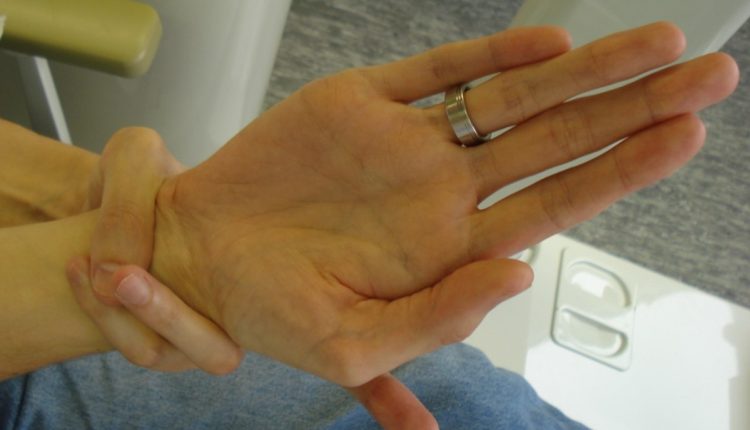
Neuroradiological Diagnostics in Marfan Syndrome
The diagnosis of Marfan syndrome is based on a combination of major and minor clinical criteria, defined in 1986 and revised recently (Berlin Nosology, 1996)
Dural ectasia has been classified among the major criteria, so Neuroradiology now plays an important role in the diagnostic process of these patients
For a better understanding of the subject, a brief description of the normal anatomy of the spine is necessary, in particular of the lumbar and sacral spine, which, as we shall see, is the tract almost invariably affected.
The Central Nervous System (CNS) comprises the encephalon and the spinal cord.
These structures are lined by three membranes, called meninges, which, from the surface of the CNS outwards, are: the Pia Madre, the Arachnoid and the Dura Madre.
The dura mater is thus the outermost ‘covering’, separated from the inner wall of the spinal canal only by a more or less thin layer of adipose tissue (‘epidural’); it also envelops the roots in their initial tract, before they exit the spinal canal completely through the conjugation foramina and defines an inner space called the dural sac. The sagittal diameter of the spinal canal in the lumbar region averages 16-18 mm and gradually thins at the sacral level.
The dura, being a connective membrane, in Marfan syndrome is altered in its elastin composition and therefore in its strength
Under the effect of the pulsations of the CSF (fluid contained in the ventricular system of the CNS and in the subarachnoid space at the level of the spinal cord) and of the force of gravity, the dural sac can therefore dilate to varying degrees, configuring a picture of dural ectasia, which is ultimately seen on MRI images as a more or less focal enlargement of the spinal canal.
Dural ectasia can potentially develop along the entire spinal column, in reality it is almost always seen in the lower lumbar and sacral region, probably due to the greater influence of the gravity factor.
The elective sites are the lumbosacral and L3 junction.
It can be more or less extensive; sometimes it is limited to focal dilatation of the dural lining of nerve roots, near their exit from the spinal column: so-called ‘radicular cysts’.
Chronic dilatation of the dural sac exerts an erosive effect on the adjacent bony structures of the spinal column.
Indirect signs are therefore: ‘scalloping’ of the vertebral bodies (i.e. the concavity of the posterior somatic walls), thinning of the bony cortical of the pedicles and laminae, i.e. the elements of the posterior vertebral arches, widening of the conjugation foramina with the presence of radicular cysts and pseudomeningoceles.
Indirect bone signs can also be seen with radiographic (Rx) and computed tomography (CT) tests.
However, the neuroradiological method of choice for the evaluation of dural ectasia is definitely Magnetic Resonance Imaging (MRI) due to its remarkable capacity for anatomical detail and multiplanarity, i.e. the possibility of obtaining images in various planes of space.
It should also be emphasised that MRI is a method that does not use ionising radiation (unlike Rx and CT), an important factor especially in the younger population.
The prevalence of dural ectasia in patients with Marfan syndrome is variable in the different studies: from 63% to more than 90%, probably also in relation to the imaging method used
In a study published in Lancet in 1999, of 83 patients with Marfan syndrome examined with MRI, dural ectasias were detected in 92% of cases, and in none of the patients in the control group.
Their severity and extent correlated with the patient’s age, probably due to prolonged mechanical stress on the dura mater.
But they constitute a relatively early finding: they were already present in 11 out of 12 patients under the age of 18.
Also in this study, there was no correlation with the presence of aortic dilatation; therefore dural ectasia has no predictive value on the cardiovascular prognosis of these patients.
With regard to clinical expression, dural ectasia is often clinically silent or may occasionally be associated with lumbago or lumbosciatica.
However, a precise correlation between lumbago and dural ectasia has not been demonstrated.
In addition to Marfan syndrome, dura ectasia may be present in a few other pathologies
In Neurofibromatosis type I, in Ehlers-Danlos syndrome.
Their prevalence in the other ‘fibrillinopathies’, i.e. the various disorders related to mutations in the gene coding for fibrillin, which have phenotypes that variously overlap with Marfan syndrome, remains unknown.
References
De Paepe A et al. Revised diagnostic criteria for the Marfan Syndrome. Am J Med Genet 1996; 62: 417-26
Fattori R et al. Importance of dural ectasia phenotypic assessment of Marfan’s syndrome. Lancet 1999; 354: 910-913
Oosterhof T et al. Quantitative assessment of Dural Ectasia as a Marker for Marfan’s syndrome. Radiology 2001; 220: 514-518.
Ahn NU et al. Dural ectasia in the Marfan syndrome: MR and CT findings and criteria. Genet Med 2000; May-Jun 2(3): 173-9.
Read Also
Emergency Live Even More…Live: Download The New Free App Of Your Newspaper For IOS And Android
Abdominal Aortic Aneurysm: What It Looks Like And How To Treat It
Bovine Aortic Arch: Risk Factor For Diseases Of The Aorta
What Is It And What Are The Symptoms Of Marfan Syndrome?



